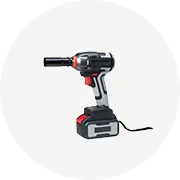Types of Semi Truck Jack Stands
Semi truck jack stands are essential safety equipment for supporting heavy-duty trucks during maintenance or repairs. Selecting the right type for your specific needs ensures both safety and efficiency. Here's a comprehensive overview of the various types available:
Fixed Jack Stands
The most common type featuring a solid base with a supporting post that includes multiple height adjustment positions. These stands incorporate a heavy-duty ratcheting mechanism to lock the post at the desired height.
Best for: General maintenance and repair tasks requiring reliability and ease of use.
Pin Type Jack Stands
Secured by a locking pin inserted into holes along the supporting post, allowing for precise height adjustment. These stands feature sturdy steel construction and are preferred in professional automotive workshops.
Best for: Environments where exact positioning is critical.
Ratchet Type Jack Stands
Utilizes a ratcheting mechanism for height adjustment and position locking, providing users with easy and precise control. This type offers both convenience and safety.
Best for: Frequent height adjustments and quick positioning.
Pyramid Jack Stands
Specialized stands featuring a pyramid-shaped base designed specifically for supporting semi trailer axles. The unique shape provides enhanced stability and prevents sinking into soft ground.
Best for: Supporting semi trailers with various axle configurations.
Curved Jack Stands
Designed with a curved top that conforms to the axle or frame shape, providing a more stable connection between the stand and the truck during maintenance operations.
Best for: Heavy-duty truck maintenance requiring secure axle contact.
Aluminum Jack Stands
Manufactured from lightweight, corrosion-resistant aluminum. While not as strong as steel alternatives, they offer significant portability advantages in mobile service operations.
Best for: Applications requiring frequent transportation and corrosion resistance.
Expert Tip: For maximum safety, always use jack stands in pairs and position them at manufacturer-recommended lifting points. Never rely solely on a hydraulic jack to support a vehicle during maintenance.
| Jack Stand Type | Key Features | Best Application | Weight Capacity Range |
|---|---|---|---|
| Fixed Jack Stands | Ratcheting mechanism, multiple positions | General maintenance | 10-50 tons |
| Pin Type Jack Stands | Locking pin system, precise positioning | Professional workshops | 12-50 tons |
| Ratchet Type Jack Stands | Quick adjustment, automatic locking | Frequent adjustment needs | 10-40 tons |
| Pyramid Jack Stands | Pyramid base, high stability | Semi trailer support | 20-100 tons |
| Curved Jack Stands | Contoured top, secure axle contact | Heavy-duty truck maintenance | 15-60 tons |
| Aluminum Jack Stands | Lightweight, corrosion-resistant | Mobile repair operations | 5-30 tons |
Specifications and Maintenance of Semi Truck Jack Stands
Understanding the key specifications and proper maintenance of semi trailer stands is crucial for ensuring safe operation and prolonging equipment life.
Weight Capacity
Semi jack stands come with specific weight ratings that indicate the maximum load they can safely support. Always select stands with a capacity that exceeds your vehicle's weight to maintain an adequate safety margin.
Safety Rule: Never exceed the manufacturer's specified weight capacity.
Adjustable Height Range
Most commercial jack stands offer height adjustability, typically in 1-inch or 3-inch increments. This feature allows for adaptation to different truck models and maintenance requirements.
Measurement: Typically ranges from 13 inches to 28 inches for semi trucks.
Material Construction
Semi trailer jack stands are primarily constructed from either steel or aluminum. Steel provides superior strength and durability, while aluminum offers corrosion resistance and portability benefits.
Consideration: Match material to your specific usage environment.
Base Size
The base dimensions directly impact stability, especially on uneven surfaces. Wider bases distribute weight more effectively and prevent sinking into softer ground surfaces.
Typical Range: 8×8 inches to 12×12 inches for heavy-duty applications.
Recommended Usage
Manufacturers specify the optimal number of jack stands for various operations. For most semi-truck maintenance tasks, using 2-4 stands is standard practice to ensure balanced support.
Best Practice: Always use in matching pairs at minimum.
Maintenance Requirements
Proper maintenance of tractor trailer stands is essential for operational safety and equipment longevity. Follow these guidelines to keep your jack stands in optimal condition:
| Maintenance Task | Frequency | Procedure |
|---|---|---|
| Cleaning | After each use | Remove dirt, debris, and oil using a clean rag or soft brush |
| Inspection | Before and after use | Check for cracks, bends, rust, or mechanical issues |
| Lubrication | Monthly | Apply lubricant to moving parts, especially ratchet mechanisms |
| Storage | When not in use | Store in clean, dry area away from direct sunlight and moisture |
| Full Inspection | Quarterly | Comprehensive check of all components including base, post, and locking mechanisms |
Safety Warning: Never use damaged jack stands. If you notice any structural defects, bent components, or malfunctioning mechanisms, replace the stand immediately. Using compromised equipment creates serious safety hazards.
How to Choose Semi Truck Jack Stands
Selecting the appropriate jack stands for your semi truck operations requires careful consideration of multiple factors to ensure safety, efficiency, and value. Here's a comprehensive guide to the key selection criteria:
Weight Capacity
The most critical specification when selecting jack stands. Always choose stands rated significantly higher than your truck's weight to provide an adequate safety margin.
Selection Tip: For semi-trucks, select stands with at least 20-25% more capacity than your vehicle's maximum weight.
Height Range
Consider both the minimum and maximum height capabilities to ensure compatibility with your specific vehicle's clearance requirements and lifting points.
Measurement Advice: Measure your truck's ground clearance and required working height before selecting stands.
Material and Construction
Heavy-duty steel construction offers maximum strength and durability for demanding environments. Aluminum alternatives provide corrosion resistance and portability advantages.
Durability Factor: Steel stands with protective coatings offer the best combination of strength and corrosion resistance.
Adjustability
Consider whether your operations require frequently changing height settings or if fixed-height stands would provide adequate support. Ratcheting mechanisms offer convenience, while pin-lock systems provide precise positioning.
Versatility Benefit: Multi-position stands accommodate various maintenance scenarios.
Expert Advice: When evaluating jack stands for commercial fleet operations, prioritize those with certifications from recognized safety organizations. These certifications ensure the stands meet rigorous testing standards for performance and reliability.
Additional Selection Criteria
| Selection Factor | Considerations | Importance Level |
|---|---|---|
| Number of Pieces | Sets of 2-4 stands are standard; assess your typical maintenance requirements | Medium |
| Safety Features | Look for double-locking mechanisms, wide bases, and secure saddle designs | Critical |
| Compliance & Certification | Verify ANSI/ASME PALD standards compliance and industry certifications | High |
| Brand Reputation | Research manufacturer history, warranty offerings, and customer reviews | Medium-High |
| Price vs. Quality | Balance budget constraints with safety requirements; avoid cheapest options | Medium |
DIY Installation and Replacement of Semi Truck Jack Stands
When jack stands show signs of wear or damage, prompt replacement is essential for maintaining safety standards. The following step-by-step guide outlines the proper procedure for replacing semi-truck jack stands.
Materials Required
- Wrench or socket set (appropriate size for your specific model)
- New replacement jack stands (matching weight capacity and specifications)
- Wheel chocks
- Clean rags
- Lubricant (optional)
Step-by-Step Replacement Procedure
Prepare the Work Area: Park the semi-truck on a flat, level surface. Engage the parking brake and place wheel chocks behind and in front of the wheels to prevent any movement during the procedure.
Remove the Old Jack Stand: Using the appropriate wrench or socket set, carefully loosen all bolts securing the existing jack stand in place. Work in a pattern that maintains stability until all fasteners are removed.
Remove Faulty Components: Once all bolts are loose, carefully remove the damaged jack stand from its mounting position. Clean the mounting area thoroughly to remove any dirt, rust, or debris.
Position the New Jack Stand: Place the new jack stand in the correct position, ensuring it aligns properly with all mounting points. Verify it sits flush against the mounting surface.
Secure the New Jack Stand: Insert and hand-tighten all bolts initially. Then, using your wrench or socket set, tighten the bolts in a crisscross pattern to ensure even pressure distribution. This technique prevents warping and ensures proper alignment.
Verify Installation: Once all bolts are properly tightened to the manufacturer's specifications, check the stability of the new jack stand. Give it a gentle shake to confirm there is no movement or wobbling.
Repeat for Additional Stands: If replacing multiple jack stands, repeat the process for each position. Always work on one stand at a time to maintain maximum vehicle stability throughout the procedure.
Safety Warning: Never attempt to use mismatched jack stands or exceed the rated capacity of your new stands. Always verify that replacement stands meet or exceed the specifications recommended by your vehicle manufacturer.
Maintenance Tip: After installation, apply a thin coat of lubricant to the moving parts of your new jack stands to ensure smooth operation. Establish a regular inspection schedule to catch potential issues before they become safety hazards.
Frequently Asked Questions
Semi truck jack stands are specialized heavy-duty support devices designed to safely elevate and maintain the position of semi-trucks during maintenance and repair operations. Unlike hydraulic jacks which are primarily used for lifting, jack stands provide stable, long-term support once the vehicle is raised. They feature robust construction and high weight capacities specifically engineered to handle the substantial weight of commercial trucks and trailers.
Semi-truck jack stands consist of several critical components working together to provide safe support:
- Base: The wide, stable foundation that distributes weight and prevents sinking into surfaces
- Support Column/Frame: The vertical structure that bears the load
- Adjustment Mechanism: Either ratcheting or pin-type systems that allow height modifications
- Saddle/Top Plate: The component that makes direct contact with the truck's lifting points
- Locking Mechanism: Safety features that prevent accidental collapse or height changes
Regular maintenance of semi-truck jack stands is crucial for several reasons:
- Safety Assurance: Well-maintained stands minimize the risk of catastrophic failures during use
- Extended Lifespan: Proper care prevents premature wear and corrosion
- Operational Reliability: Maintenance ensures consistent performance when needed
- Regulatory Compliance: Many workplace safety regulations require regular inspection and maintenance of lifting equipment
- Cost Efficiency: Preventive maintenance costs significantly less than replacing damaged equipment or addressing injuries from equipment failures
Always adhere to these critical safety guidelines when using semi-truck jack stands:
- Position the truck on a firm, level surface before attempting to use jack stands
- Always engage the parking brake and chock the wheels before lifting
- Use jack stands in pairs at manufacturer-recommended lifting points
- Never exceed the rated weight capacity of the stands
- Verify that locking mechanisms are fully engaged before working under the vehicle
- Avoid working under a vehicle supported only by a hydraulic jack—always transfer the load to jack stands
- Inspect jack stands for damage or deformation before each use
- Follow the specific instructions provided by both the stand manufacturer and the truck manufacturer
The primary differences between these two common jack stand types include:
| Feature | Ratchet-Type Stands | Pin-Type Stands |
|---|---|---|
| Height Adjustment | Continuous incremental adjustment via teeth | Fixed height options at pin hole locations |
| Ease of Use | Quick adjustment with automatic locking | Requires manual pin insertion and removal |
| Precision | Limited by tooth spacing | Very precise at available heights |
| Safety Mechanism | Pawl engages with teeth | Solid steel pin through frame |
| Typical Applications | General maintenance with variable heights | Specialized work requiring exact heights |































































































































































































































































 浙公网安备 33010002000092号
浙公网安备 33010002000092号 浙B2-20120091-4
浙B2-20120091-4